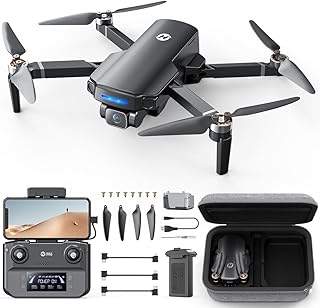Cybersecurity Risks in Drone Operations: Protecting Our Skies
The increasing popularity and adoption of drones across various sectors, from delivery and inspection to agriculture and law enforcement, has introduced a new frontier in cybersecurity risks. While offering numerous benefits, these unmanned aerial vehicles (UAVs) are vulnerable to various attacks that can compromise their integrity, safety, and functionality. Here's a breakdown of the key cybersecurity risks and strategies to mitigate them:
Cybersecurity Risks:
* Data Breaches: Drones collect and transmit vast amounts of sensitive data, including location coordinates, images, and sensor readings. Hackers can exploit vulnerabilities in drone systems to steal this data, leading to privacy violations, intellectual property theft, and even national security breaches.
* Remote Takeover: Attackers can hijack drones remotely, gaining control over their flight paths, cameras, and other functionalities. This could result in dangerous situations like crashes, unauthorized surveillance, and even weaponization of drones.
* Denial of Service: Drones can be disrupted or rendered inoperable through denial-of-service attacks. This can impact critical operations like search and rescue missions, aerial surveillance, and emergency response.
* Malware Infections: Similar to other devices, drones can be infected with malware, potentially compromising their functionality, stealing data, or allowing attackers to gain remote control.
* Supply Chain Attacks: Vulnerabilities in drone hardware, software, or components can be exploited by attackers throughout the supply chain, resulting in compromised drones entering the market.
* Lack of Security Standards: The drone industry lacks standardized security protocols and regulations, making it difficult to enforce consistent security measures across different manufacturers and applications.
Strategies for Mitigating Cybersecurity Risks:
* Robust Encryption: Implement strong encryption algorithms to protect data transmitted by drones, making it difficult for attackers to intercept or decrypt information.
* Secure Communication Protocols: Use secure communication protocols like HTTPS and TLS to encrypt communication between the drone and its ground control station, protecting against eavesdropping and tampering.
* Regular Security Updates: Ensure drones and their software are updated regularly to address vulnerabilities and patch security flaws.
* Strong Authentication and Access Control: Implement strong authentication mechanisms for drone operators and limit access to critical functions based on user roles and permissions.
* Secure Firmware Development and Testing: Develop secure firmware for drones with robust security features and undergo rigorous testing to identify and mitigate vulnerabilities.
* Secure Data Storage and Management: Store drone data securely and follow best practices for data protection, including access control, encryption, and regular backups.
* Security Awareness Training: Educate drone operators about potential cybersecurity threats and best practices for safe and secure operation.
* Collaboration and Information Sharing: Encourage collaboration among drone manufacturers, operators, and security researchers to share information and best practices.
* Government Regulations and Standards: Promote the development and implementation of regulatory frameworks and industry standards to enhance drone security.
Protecting Our Skies:
Ensuring cybersecurity in drone operations is crucial for protecting privacy, safety, and national security. By implementing robust security measures, promoting collaboration, and fostering awareness, we can mitigate risks and ensure the responsible and secure operation of drones in our skies.


